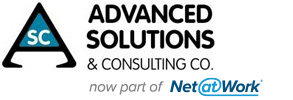ERP Software for Multi-Modal Manufacturing – Part 2
Multi-modal manufacturing is a process that has gained popularity in recent years as businesses strive to become more efficient and competitive. As explained in the first blog post in this two-part series, this approach to manufacturing uses multiple methods or modes of production to create a product. While multi-modal manufacturing offers many benefits, it also creates unique challenges for enterprise resource planning (ERP) software systems. Manufacturers must adequately configure their system to take full advantage of multi-modal manufacturing. Failure to do so can result in inaccurate inventory levels, missed shipping deadlines, and other costly problems.
Legacy ERP systems are designed for a single manufacturing method. They tend to lack the features required by modern, multi-modal manufacturers. Changes to the system for one manufacturing method can affect all other techniques. Therefore, it is essential to consult with vendors, consultants, and value-added resellers to understand the system’s unique requirements for each manufacturing method and how to use them properly. For example, a unit of measure setup and conversion for batch process manufacturing must also be configured correctly to ensure accuracy.
In addition, the company must consider how each manufacturing method incorporates into its current processes and whether they need additional staff or training to accommodate any changes. Suppose a business is transitioning from one manufacturing method to multiple methods. Companies should consider the upfront cost of equipment, software upgrades, and personnel training.
Select an ERP Application that Grows with Your Business
As mentioned, legacy ERP systems are inadequate for multi-modal manufacturing, leading to disparate deployments in mixed-mode environments. The solution is a modern ERP system such as Acumatica, which provides native support for multiple methods of manufacturing and commerce connectors. This ERP system helps companies expand into new markets and ensures businesses can remain future-proof and stay competitive.
The next step for businesses that have implemented multi-modal manufacturing is to ensure that their ERP system can support it. This process includes ensuring software has adequate inventory control capabilities, a robust shipping module, and reliable scheduling functions. Additionally, ERP systems should be able to integrate easily with other third-party applications and services to facilitate data flow between systems. Finally, ERP software should provide real-time visibility into inventory levels and production metrics. These features allow businesses to make better-informed decisions about their supply chain and operations.
How Acumatica Can Help
Acumatica’s cloud-native ERP platform combines artificial intelligence, machine learning, and powerful business intelligence applications with robust financials and native customer relationship management. These features allow companies to boost sales, maximize resources, automate processes, and improve profits by using applications for production, estimating, engineering, material planning, scheduling, product configuration, and manufacturing data collection.
Bottom Line
Migrating to an ERP system that supports multi-modal manufacturing can be daunting for many businesses, but the rewards are worth it. With the right system in place, companies can improve efficiency, reduce costs, and make better decisions. Companies can take full advantage of the benefits of multi-modal manufacturing by adequately configuring their ERP systems to meet their specific requirements.
With multi-modal manufacturing shaping up to be a long-term trend, manufacturers should know that deploying multiple and disparate ERP systems will likely hinder their chances of success. Download the free eBook today to learn how.
Additional Manufacturing Resources
Multi-Modal Manufacturing: What is it and why should you care?

